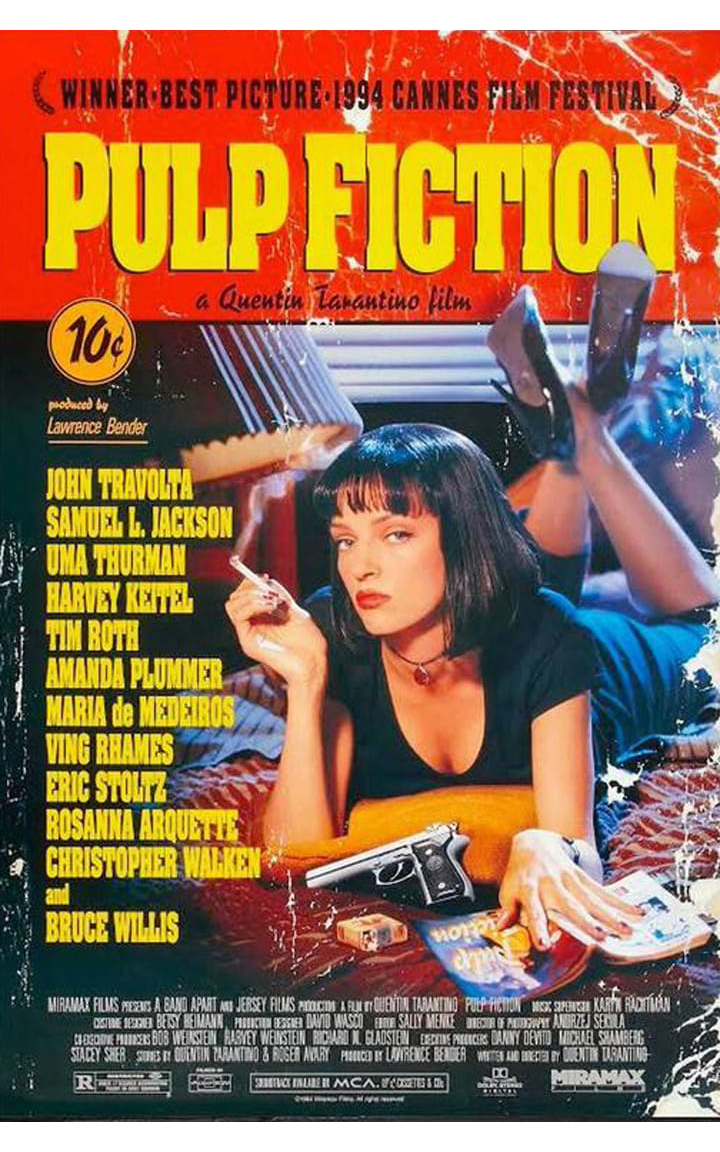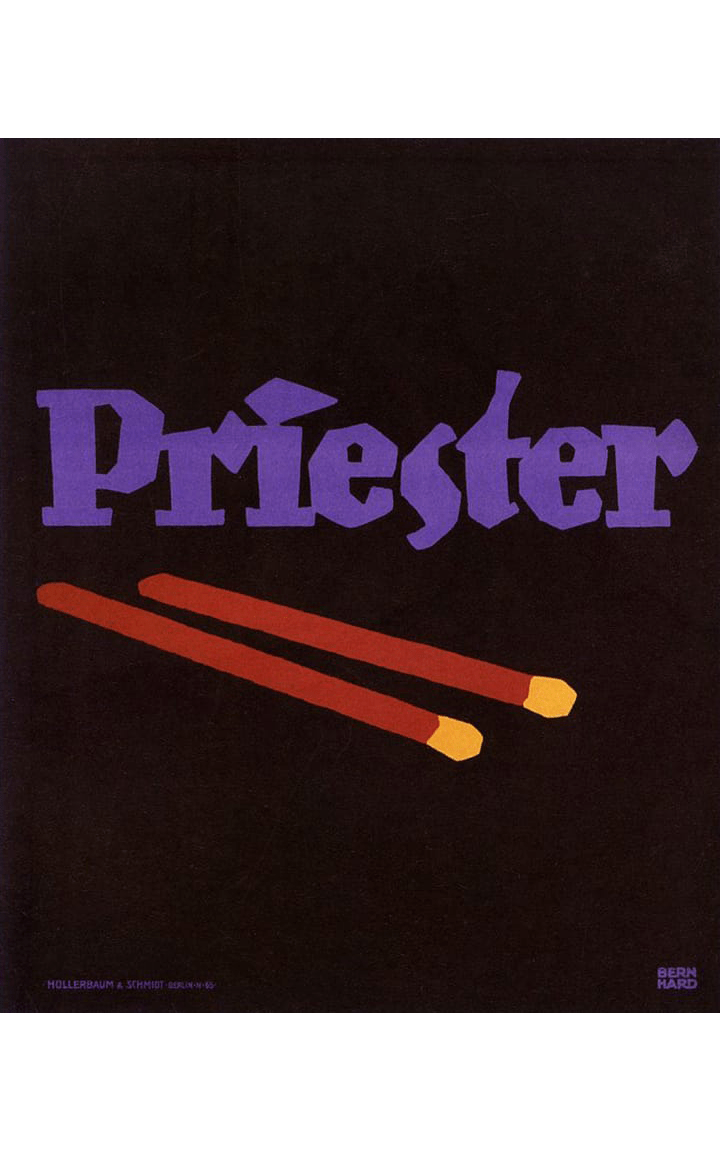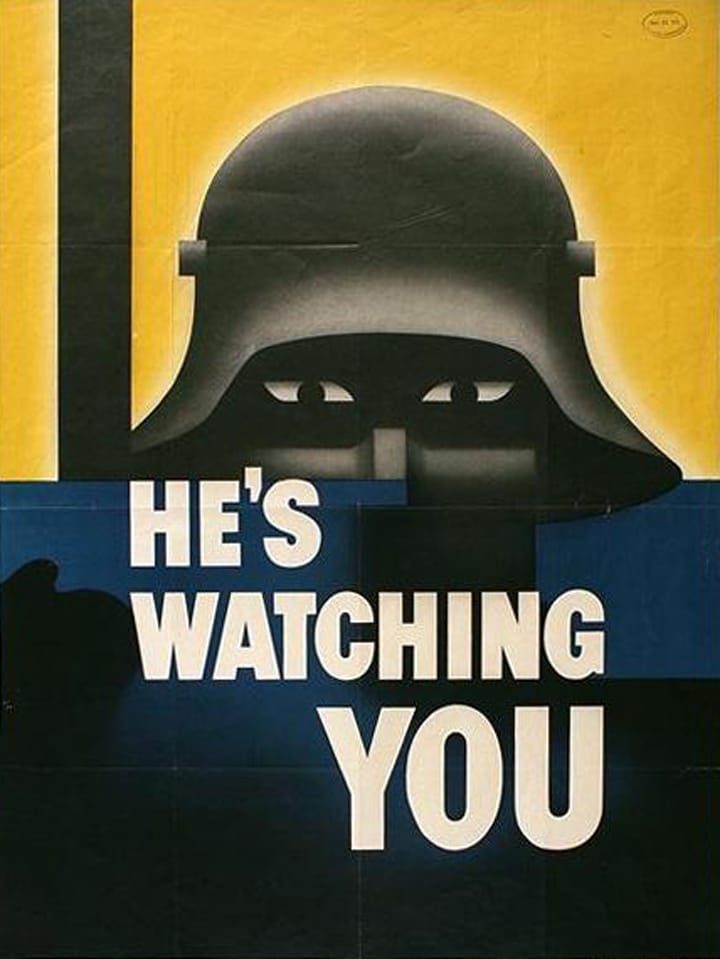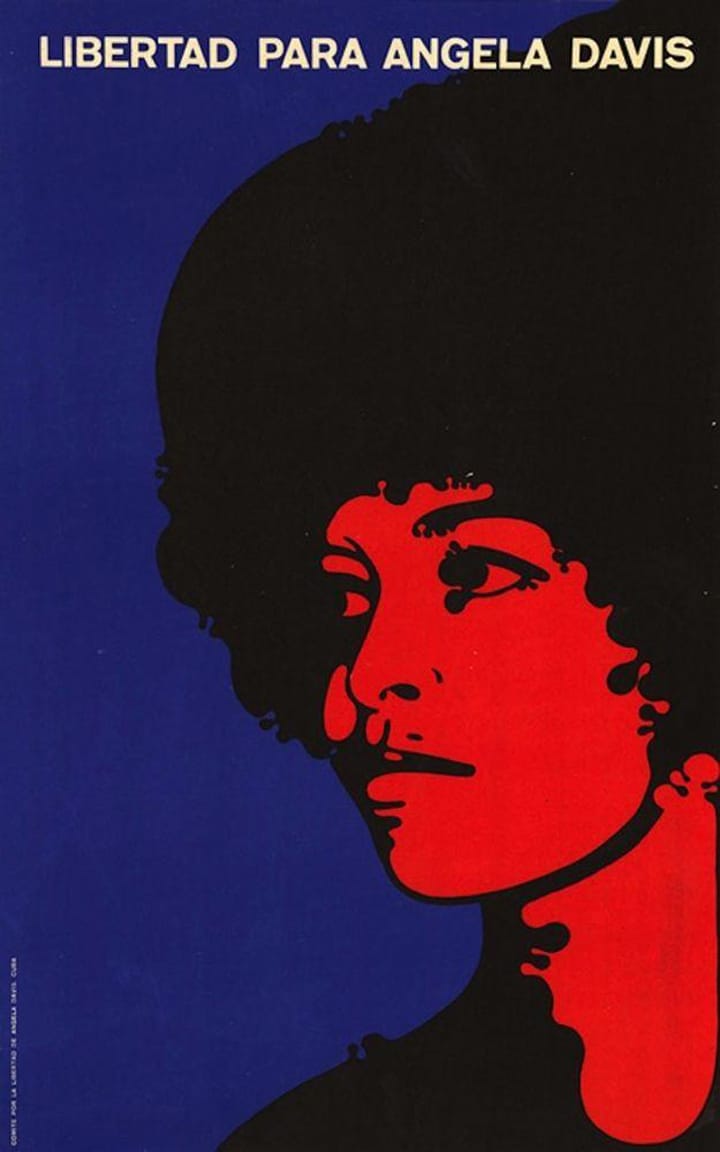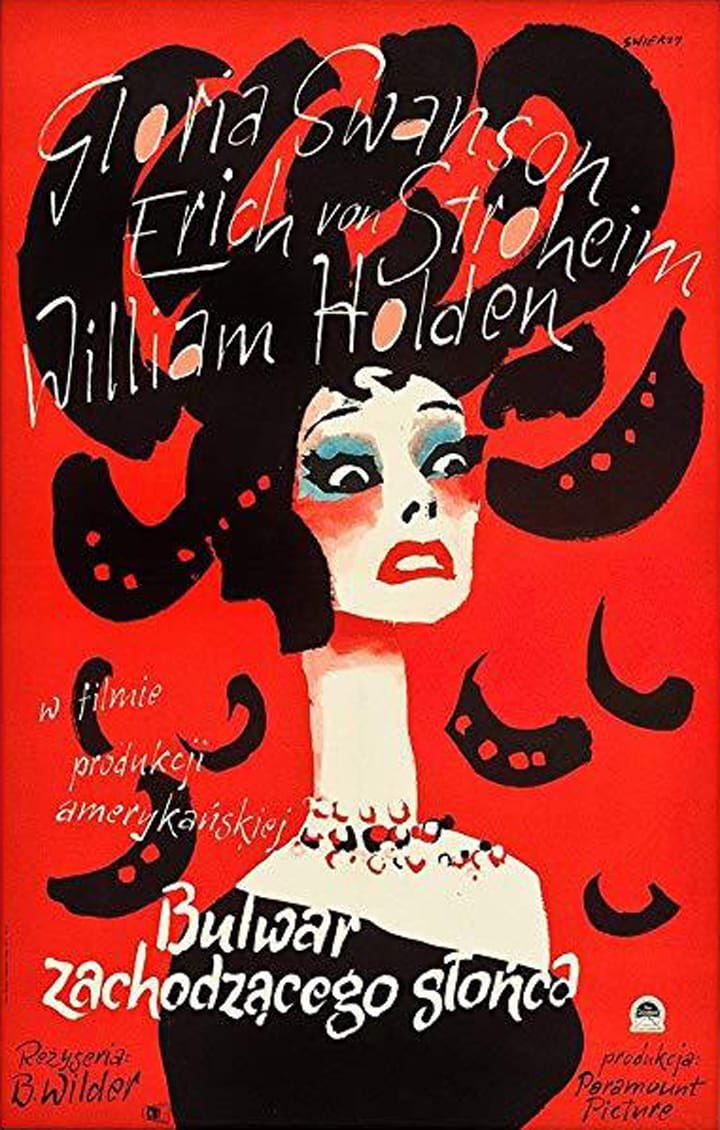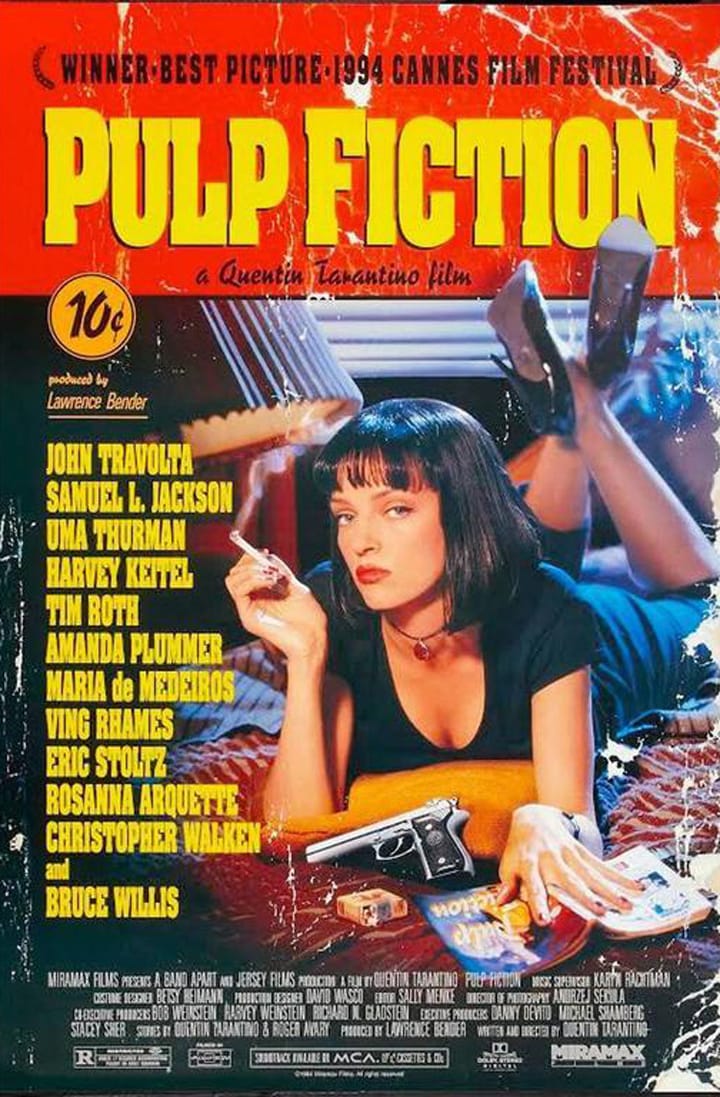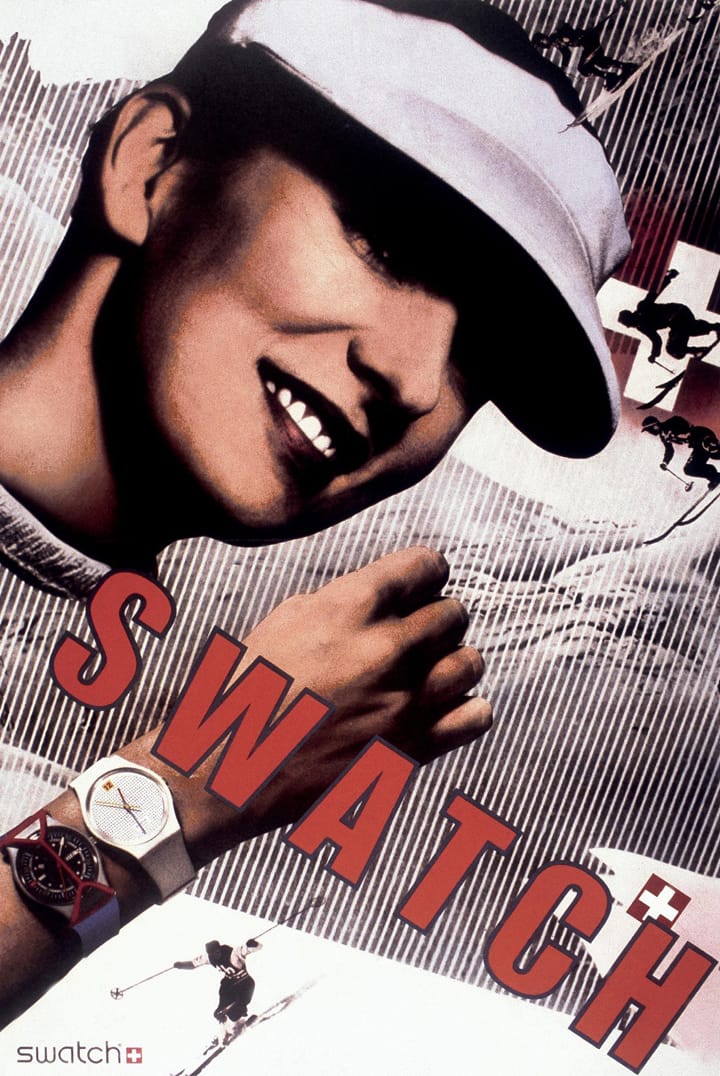
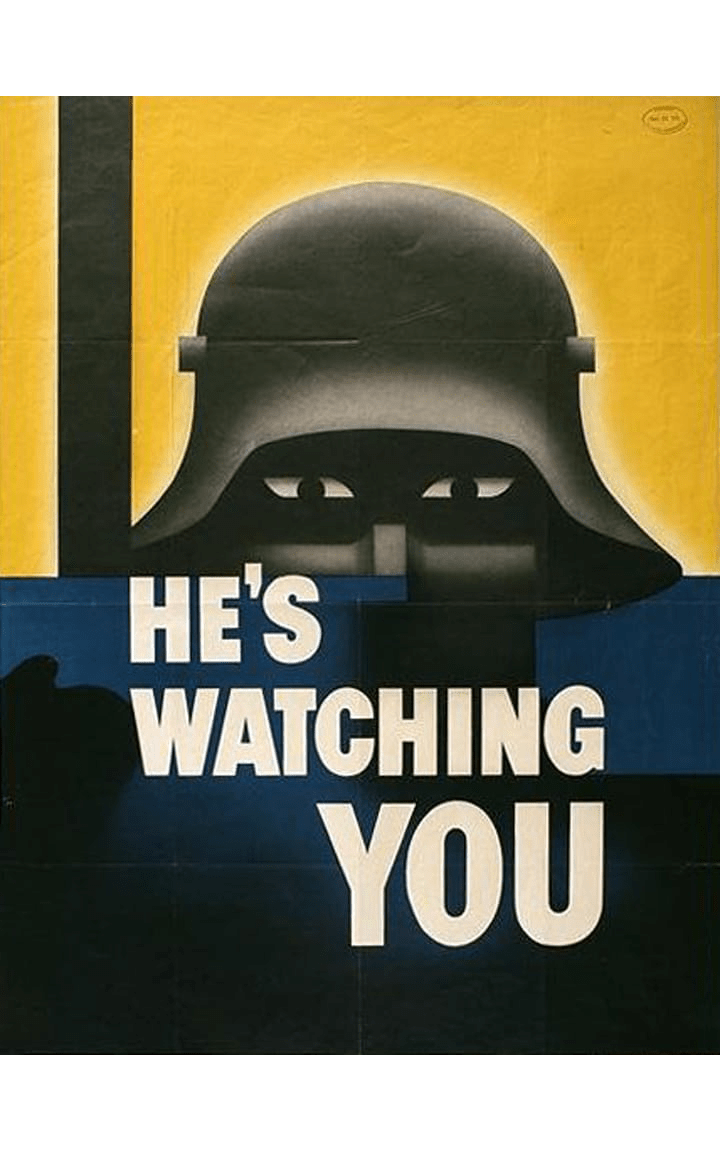
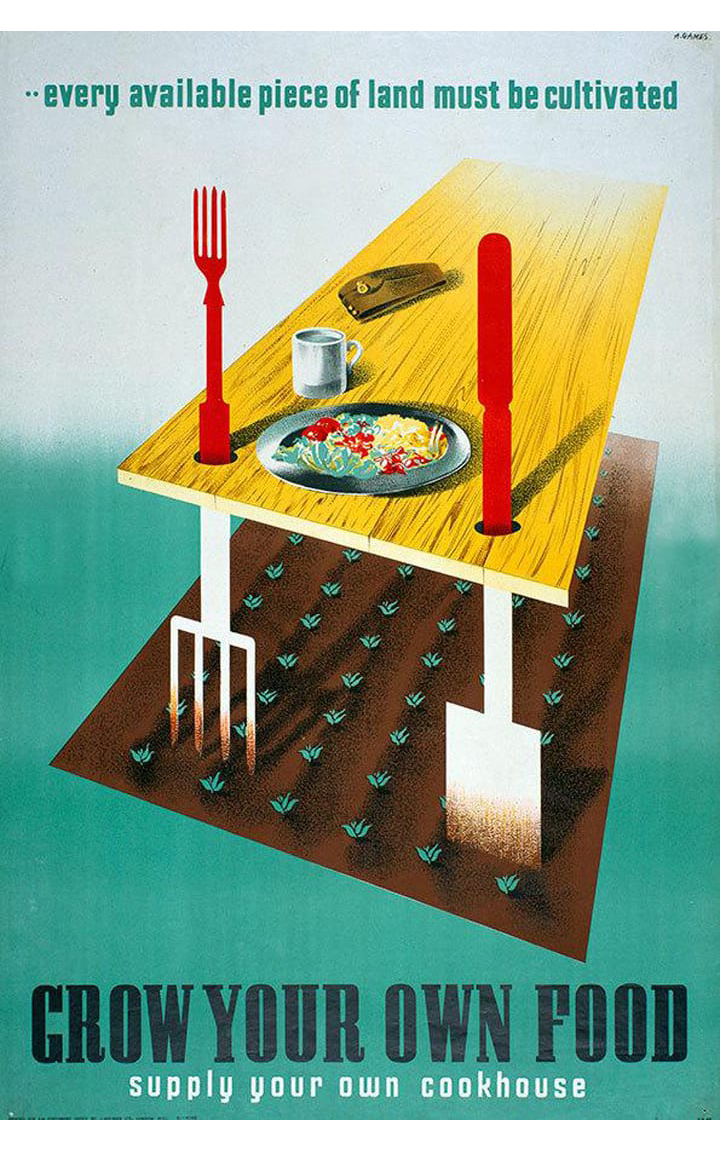
A lot goes into creating a good poster! Take a journey through design history and learn how words and images come together to make your very own poster.


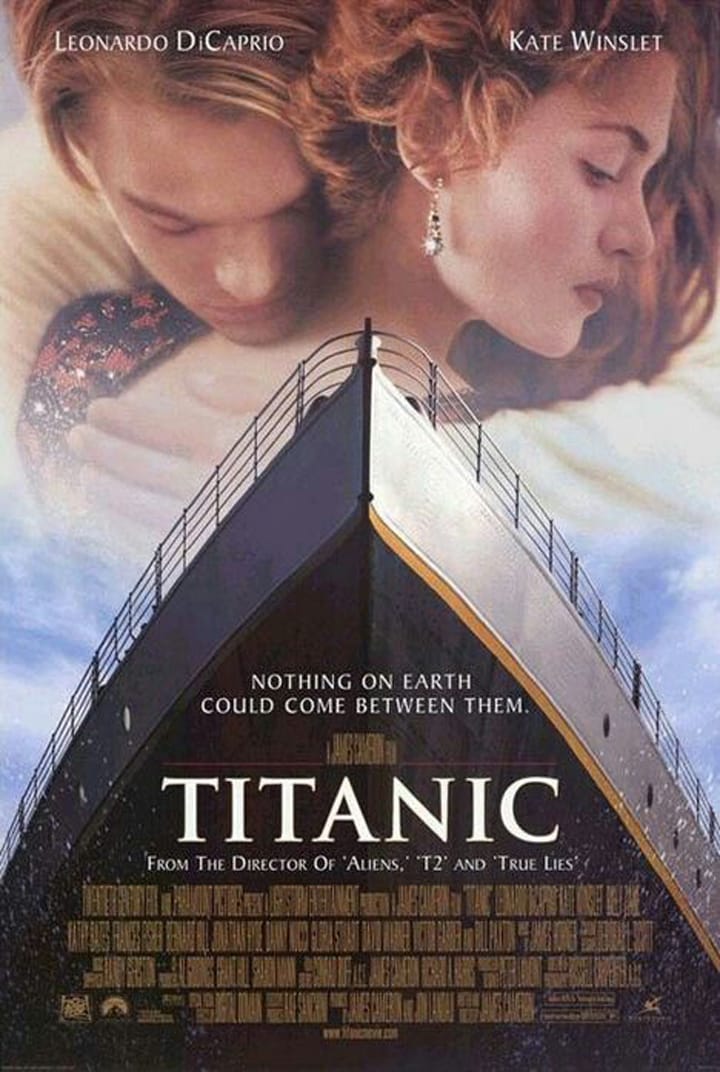
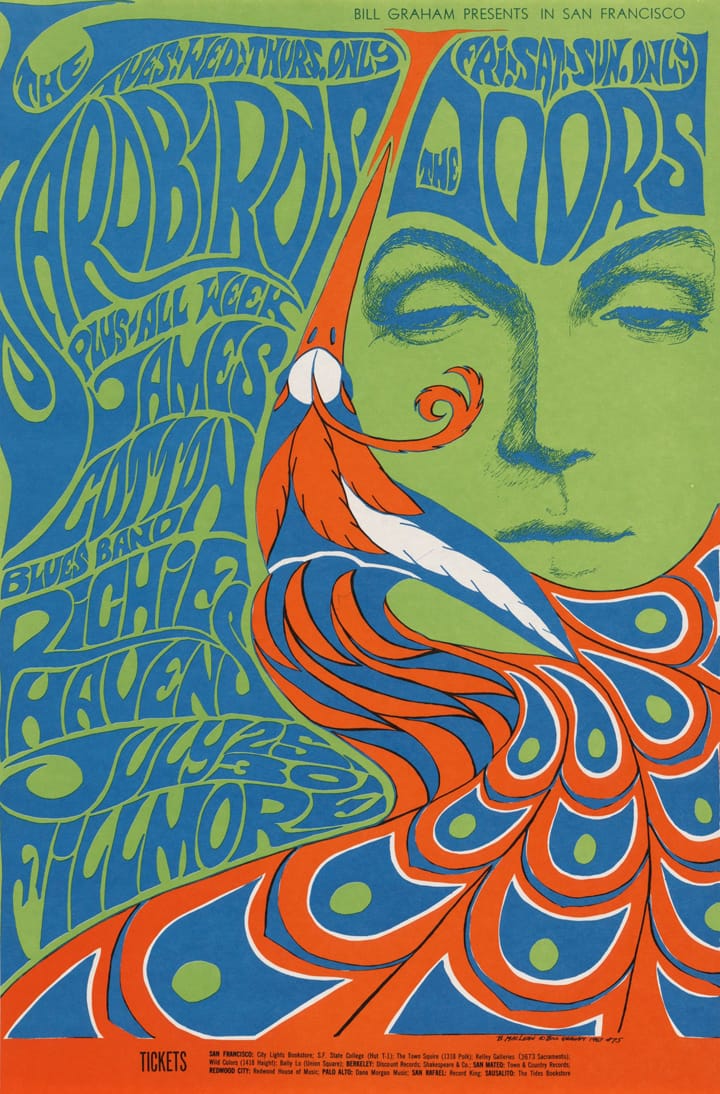
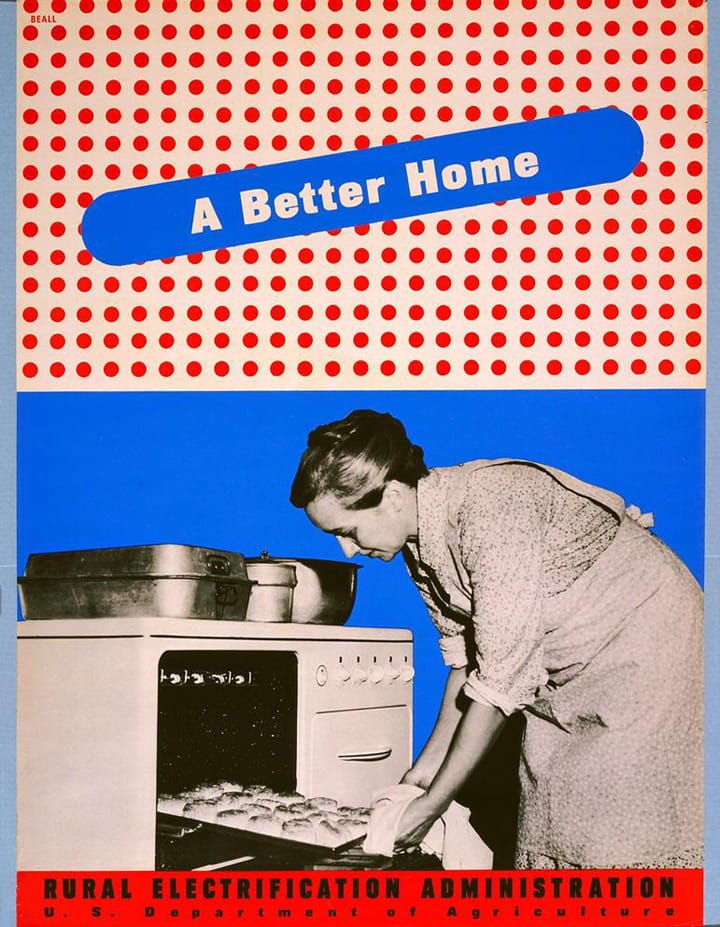
Posters promote ideas, events, and products to the public. Choose a theme to start designing yours now!
Propaganda is designed to influence viewers and promote the political agenda of a government or activist group. It often uses biased language and charged imagery to solicit an emotional response, rather than a rational one.
Glenn Grohe. He’s Watching You. 1942. USA
Abram Games. Grow Your Own Food. 1942. England.
Felix Beltrán. Free Angela Davis. c.1977. Cuba.
Posters have been used to advertise films since the very first public screenings took place. Today’s designers rely on a well-developed visual language of design techniques and tropes to communicate the mood and genre of a film.
Tomi Ungerer. Dr. Strangelove. 1964. USA.
Waldemar Świerzy. Sunset Boulevard. 1957. Poland.
Indika Entertainment Advertising. Pulp Fiction. 1994. USA.
Posters have always been used to market products and services. While modern advertisers adapted ideas from psychology to persuade and manipulate customers, designers found advertising posters to be a fertile ground for graphic experimentation.
Adolfo Hohenstein. Phoenix Beer. 1899. Italy.
Lucian Bernhard. Priester Matches. 1905. Germany.
Paula Scher. Swatch. 1984. USA.



Designers rely on visual symbols to communicate ideas to a broad audience.
First used by labor unions, a raised fist can symbolize solidarity or resistance.
Shepard Fairey. We the Future / Power to the Polls. 2018. USA.
Designer Unknown. Every Act of Solidarity Helps Win! c.1977. Germany.
Strike Poster Workshop. Strike for the Eight Demands. 1969. USA.
Many countries use characters to personify their national identity and inspire patriotism: Marianne in France, Britannia in England, Columbia in the United States.
James Montgomery Flagg. Wake Up, America! Civilization Calls Every Man Woman and Child! 1917. USA.
Georges Scott. For the Flag! For Victory! 1917. France.
Carton Moore-Park. Britain’s Day. 1918. USA.
A person pointing directly at the viewer has been an effective call to arms since WWI, spurring entire generations into action.
James Montgomery Flagg. I Want You for U.S. Army. 1917. USA.
Alfred Leete. Britons (Lord Kitchener) Wants You. 1914. UK.
Achille Mauzan. Subscribe! Credito Italiano. c.1918. Italy.
Charismatic leaders foster cults of personality to gain control, their image becoming symbolic of their movement. They are often known for a defining feature: a beret, a style of suit, an iconic helmet.
Elena Serrano. Day of the Heroic Guerrilla. 1968. Cuba.
Designer Unknown. Mao Is the Red Sun in Our Hearts. c.1960. China.
Xanti Schawinsky. 1934-XII Si. 1934. Italy.
A shining sun symbolizes the promise for a bright future and the hope of a new day.
Designer Unknown. To-day Buy That Liberty Bond. c.1917. USA.
Nikolai Nikolaevich Kupreyanov. What the October Revolution Gave to the Working Women and Peasants. 1920. Russia.
Valentin Zietara. Freedom, Peace, Work / Elect the German People’s Party in Bavaria. 1919. Germany.
Westerns are characterized by outlaw gunfights, trusty steeds, and of course the rugged lawman—perfectly exemplified by John Wayne in True Grit.
Designer Unknown. The Searchers. 1956. Japan.
David Blossom. A Fistful of Dollars. 1964. USA.
BLT Communications. True Grit. 2010. USA.
“Of all the gin joints in all the towns in all the world, she walks into mine.” The destiny of lovers is the focus of Romance films, passionately portrayed by Bogart and Bergman in Casablanca.
Luigi Martinati. Casablanca. 1946. Italy.
Designer Unknown. Dirty Dancing. 1987. USA.
BLT Communications. Brokeback Mountain. 2005. USA.
Often exuberant and theatrical, Musicals tell a story through song and dance. In the words of Fred Astaire, “Do it big, do it right, and do it with style.”
Designer Unknown. Follow the Fleet. 1936. USA.
Richard Amsel. Hello Dolly. 1969. USA.
LA Associates. La La Land. 2016. USA.
Action film heroes face incredible challenges, never better exemplified than by Steve McQueen’s famous motorcycle getaway in The Great Escape.
Frank McCarthy. The Great Escape. 1963. USA.
Richard Amsel. Raiders of the Lost Ark. 1982. USA.
Art Machine. Black Panther. 2018. USA.
Suspense movies use tension to keep the audience on edge as they await the inevitable, ominous conclusion, just like Joan Crawford does in the classic noir film Sudden Fear.
Designer Unknown. The Lady from Shanghai. 1977. Japan.
Saul Bass. Vertigo. 1958. USA.
Dawn Baillie. Silence of the Lambs. 1991. USA.
Comedies can be dark, dry, cerebral, or slapstick, but they are always out to make audiences laugh. And what’s funnier than Groucho Marx’s prop cigar?
Bernard Lancy. Bringing Up Baby. 1938. France.
Robert Grossman. Airplane! 1980. USA.
John Alvin. Ace Ventura: When Nature Calls. 1995. USA.
“Sex sells” is a cardinal rule of advertising. The Sex strategy often presents a heterosexual male fantasy that is laughably unrelated to the thing being sold.
Gino Boccasile. Olio Radino. 1950. Italy.
Designer Unknown. Jamaica. 1972. Jamaica.
Designer Unknown. Budweiser. c.1980. USA.
Shock is used sparingly by advertisers. Designed to startle or offend, the ethics and effectiveness of this as a marketing strategy is up for debate.
Designer Unknown. Elimin. c.1900. Germany.
Stefan Sagmeister. AIGA Detroit. 1999. USA.
Toscani, Oliviero. United Colors of Benetton / Newborn Baby. 1991. Italy.
Indulgence advertising invites customers to give in to their cravings and sometimes portrays yielding to temptation as a well-earned extravagance.
Raymond Savignac. Vérigoud. 1955. France.
Herbert Leupin. Bell. 1939. Switzerland.
Francisco Tamagno. La Framboisette. c.1900. France.
Novelty advertising exploits a desire for the next big thing, which pays off in a culture where customers crave self-improvement and cutting-edge technologies.
Designer Unknown. Philips. 1954. Italy.
Edward McKnight Kauffer. Use the Telephone. 1934. UK.
TBWA\Chiat\Day. Yum. 1999. USA.
Exoticism tempts customers with colonialist fantasies of faraway places by using romanticized or racist stereotypes.
Charles Loupot. Philippossian & Co. 1920. France.
Ludwig Hohlwein. Marco Polo Tee. c.1925. Germany.
Kenneth & William Willmarth. New Mexico and Arizona Rockies. c.1925. USA.



Designers rely on visual symbols to communicate ideas to a broad audience.
The most visible color to the human eye from a distance, yellow is often used to communicate urgency. It is the color of taxis and roadwork equipment and is an effective hue for safety posters.
Laura Berkowitz Gilbert & Sandra Hepp. Choking Victim. 1996. USA.
Metropolitan Transportation Authority. If You See Something, Say Something. 2003. USA.
Designer Unknown. Transport For London. c.2010. UK.
Electricity has been observed in nature as a light, bright blue, and this shade is used in posters to suggest the power of modern technology.
Orsi. Flourescent Lamp / Philips. c.1940. France.
Bill Hoffman. Age of Space / U.S. Airforce. c.1961. USA.
TBWA\Chiat\Day. iPod. 2003. USA.
While trying to produce quinine, chemist William Perkin accidentally created the first synthetic dye, the color of which became so fashionable that the 1890s have been called the Mauve Decade.
Alphonse Mucha. Job. 1896. France.
Pal. Folies-Bergère / Loïe Fuller. 1897. France.
M. Ponaf. Rubinat. 1902. France.
Can a single color define a generation? Some see the cultural phenomenon of Millenial Pink as a 21st-century embrace of changing gender norms, others as a savvy marketing ploy.
BLT Communications. The Grand Budapest Hotel. 2014. USA.
Thinx In-House Creative Team. Thinx. 2016. USA.
Photo: Viviane Sassen. Acne Studios. 2015. Sweden.
Red has long symbolized left-wing political rebellion and the spilled blood of the proletariat in Communist propaganda posters worldwide.
Irakly Toidze. In the Name of Peace. 1959. Russia.
Propaganda Poster Group Shanghai. Criticize the Old World and Build a New World with Mao Zedong Thought as a Weapon. 1966. China.
Paul Davis. The Spirit of Che Lives in the New Evergreen! 1968. USA.
Olive Drab was the color of US military uniforms from WWII through Vietnam, despite being an ineffective camouflage. In American propaganda posters of that time, there was no more patriotic shade.
John Vickery. His Life Is in Your Hands. 1942. USA.
U.S. Adjutant General’s Office. Who Wants to Know? Silence Means Security. 1943. USA.
Herbert Morton Stoops. Careless Talk...Got There First. 1944. USA.
Absinthe was all the rage in 19th-century Europe. Highly alcoholic, the “green fairy” caused a public health crisis and was widely banned, but not before its jade hue inspired artists of the day.
Privat Livemont. Absinthe Robette. 1898. France.
Leonetto Cappiello. Maurin Quina. 1906. France.
Nover. Absinthe Blanqui. c.1895. France.
Rich Black is achieved in the CMYK printing process by combining all four inks: cyan, yellow, magenta, and black. The resulting color is “blacker than black”—a shade that is richer and deeper than black ink alone can produce.
Tomoko Miho. Broadway. 1968. USA.
Manfred Bingler. Swissair. 1961. Switzerland.
Paul Rand. Eye Bee M (IBM). 1981. USA.
Rejecting realism, modernist designers embraced the graphic power of white space. Modernist White may seem empty, but its minimalism is utterly intentional.
Henri de Toulouse-Lautrec. Jane Avril. 1899. France.
Ludwig Hohlwein. Kaffee Hag. 1913. Germany.
Joseph Müller-Brockmann. Musica Viva. 1959. Switzerland.



Choose a phrase for your propaganda poster to get your message across.
Choose a title for the film your poster will promote.
Choose a slogan to sell your product.



Though often unnoticed, typography has remarkable power over how we absorb information. Moveable type design dates back to the invention of the printing press in 1439, but most text found in posters was hand-lettered into the 1960s. Typeface design became more mainstream as desktop publishing took hold, and now design professionals and amateurs alike have thousands of digital fonts at their fingertips.

Johann Bauer, Germany, 1835
Fette Fraktur embodies “Germanness.” Though long avoided after being adopted by the Nazis, this “blackletter” typeface has recently re-emerged in heavy metal and hip-hop graphics.
Julius Gipkens. Exhibition of Captured Aircraft. 1917. Germany.
Designer Unknown. Alka-Seltzer Germany. 1968. USA.
Kii Arens. Motorhead. 2014. USA.

Robert Besley, UK, 1845
Clarendon is a slab serif typeface—where the finishing strokes are flat and blocky. Early versions were widely used in 19th-century “Wanted” signs and other broadsides that pre-date posters.
Designer Unknown. John Wilkes Booth Wanted Broadside. 1865. USA.
Hatch Show Print. R.E.M. 1995. USA.
BLT Communications. To Kill a Mockingbird. 2018. USA.

Hermann Hoffman, Germany, 1908
Berthold Block was inspired by the hand lettering of Plakatstil poster designer Lucian Bernhard. Distressed edges soften its burly forms, giving it an organic feel.
Lucian Bernhard. Bosch Oil. c.1914. Germany.
Hans Rudi Erdt. The U-Boats Are Out! 1917. Germany.
Seymour Chwast. Seymour Chwast Retrospective. 1986. USA.

Oz Cooper, USA, 1922
Bold and cheerful, Cooper Black has been a widely popular “fat face” since its 1922 design by Oz Cooper, who quipped that it was “for far-sighted printers with near-sighted customers.”
Doyle Dane Bernbach. You Don't Have to Be Jewish to Love Levy’s. 1964. USA.
Steven Frykholm. Herman Miller Summer Picnic. 1985. USA.
Globe Poster Printing Corp. Frank Zappa. 1995. USA.

Paul Renner, Germany, 1927
Futura is the definitive geometric sans-serif typeface. A modern icon with mass appeal, Futura’s measured lines have taken over the world and beyond—including the plaque left on the Moon by Apollo 11.
Designer Unknown. Nixon Re-Election Poster. 1972. USA.
Bob McCall. 2001: A Space Odyssey. 1980 re-release poster. USA.
Neil Kellerhouse. The Social Network. 2010. USA.

Morris Fuller Benton, USA, 1928
Designed at the height of the Roaring Twenties, Broadway is the most enduring and essential Art Deco typeface, and its dramatic geometry still conjures Jazz Age glamour.
Jean-Raoul Naurac. Londres-Vichy-Pullman. 1927. France.
Razzia. Deauville. 1982. France.
Karel Vaca. Dusts in Dust. 1982. Czechoslovakia.

A.M. Cassandre, France, 1937
Art Deco legend A.M. Cassandre believed Peignot’s stripped-down forms and mixed-case letters would revolutionize the printed word. Peignot did not increase literacy as he hoped, but its quirky grace is still admired.
Lucien Boucher. Air France / Great Britain. 1951. France.
Robert McGinnis. Barbarella. 1968. USA.
Designer Unknown. The Whirling Dervishes of Turkey. c.1970. USA.

Gerry Powell, USA, 1937
The shipping industry used stencils to create lettering on cargo for hundreds of years before this typeface was designed in 1937, and Stencil often suggests a utilitarian, military, or DIY association.
McClelland Barclay. Arise Americans. 1941. USA.
Jakub Erol. Like Wounded Birds. 1976. Poland.
See Red Women’s Workshop. Organise Against the National Front. c.1978. UK.

Roger Excoffon, France, 1953
Mistral brilliantly solved the long-standing problem of how to make a typeface with connected cursive script. Modeled on its designer’s own handwriting, Mistral has a lively, casual feel.
Jean Colin. Air France / Caravelle. 1959. France.
Designer Unknown. The Kids Are Alright. 1979. USA.
The Refinery. Drive. 2011. USA.

Max Meidinger, Switzerland, 1957
The most popular typeface on earth, Helvetica has become a household name. Efficient, assured, and highly legible, Helvetica was eagerly adopted by modernist designers who prized its clean simplicity.
Massimo Vignelli. Pirelli Tires. 1963. Italy.
Chermayeff & Geismar. Pan Am / USA. 1971. USA.
Former Partner. American Apparel. c.2000. USA.

Milton Glaser, USA, 1968
Inspired by a hand-painted sign for a Mexican tailor shop, Baby Teeth is a cornerstone of “I (Heart) NY” designer Milton Glaser’s oeuvre. Baby Teeth is itself hand-lettered, but versions like Bebit make it available for digital use.
Milton Glaser. Dylan. 1966. USA.
Karel Vaca. The Great Movie Robbery. 1988. Czechoslovakia.
Chermayeff & Geismar. Big Apple Circus. c.1990. USA.

Carol Twombly, USA, 1989
Carol Twombly adopted the classical letterforms of ancient Roman inscriptions when she designed Trajan in 1989. One of the first digital typefaces, Trajan is pervasive in film posters, and a genre-defying Hollywood standby.
BLT Communications. Titanic. 1997. USA.
BLT Communications. The Mummy Returns. 2001. USA.
The Cimarron Group. Gladiator. 2000. USA.



Style is the way visual elements come together to create a “look,” but Style can also represent the mood of a time and place—and a rejection of what came before.
1871–1914
The first posters were made during the Belle Époque, and their innovative, jubilant style reflected the prosperity and optimism of the era.
Jules Chéret. Folies Bergère: Lotus Flower. 1893. France.
Henri de Toulouse-Lautrec. Moulin Rouge: The Glutton. 1891. France.
Théophile-Alexandre Steinlen. The Black Cat Tour. 1896. France.
1890–1910
Defined by languid curves and organic forms, the “floriated madness” of Art Nouveau was an international design revolution.
Alphonse Mucha. F. Champenois / Rêverie. 1897. France.
William Bradley. The Chap Book. 1895. USA.
Eugène Grasset. L. Marquet Ink. 1892. France.
1925–1939
Elegant lines and geometric shapes define the Art Deco style, which celebrated glamourous consumerism and the efficiencies of modern life.
Joseph Binder. New York World's Fair. 1939. USA.
A.M. Cassandre. Nord Express. 1927. France.
Paul Colin. André Renaud. 1929. France.
1917–1930
Photomontage, bold colors, and dynamic compositions define Constructivism, a design movement that reflected the ideals of Communism in the wake of the Russian Revolution.
Alexander Rodchenko. There Are No Better Pacifiers. 1923. Russia.
Vladimir and Georgii Stenberg. The Adventures of an Abandoned Child. 1926. Russia.
Gustav Klutsis. Workers, Everyone Must Vote in the Election of Soviets! 1930. Russia.
1895–1960
An insightful realism defined the American Illustration style. The best-known illustrators were highly skilled draftsmen and trusted household names, their work gracing countless posters and magazine covers.
Howard Chandler Christy. Gee!! I Wish I Were a Man. 1917. USA.
J.C. Leyendecker. Arrow Dress Collars & Shirts. 1922. USA.
Norman Rockwell. Freedom from Want. 1943. USA.
1930–1960
Spanning several eras, Modernism reflected the long transition into the machine age. Late Modernism in the 1930s and 1940s responded to monumental advances in technology and favored a streamlined, graphic style.
Herbert Matter. Pontresina. 1935. Switzerland.
Man Ray. London Transport - Keeps London Going. 1938. UK.
Lester Beall. A Better Home / Rural Electrification Administration. 1941. USA.
1950–1970
Developed in post-war Switzerland, the International Typographic Style took an objective approach to design, identifiable by its strict use of sans-serif typography, simple imagery, and grid system compositions.
Armin Hofmann. Giselle. 1959. Switzerland.
Joseph Müller-Brockmann. Beethoven. 1955. Switzerland.
Jacqueline Casey. The Moon Show. 1969. USA.
1966–1972
The Psychedelic style reflected the drug and youth culture of 1960s San Fransisco, taking elements from Surrealism, Art Nouveau, and Op-Art to create a pulsating visual language.
Victor Moscoso. The Miller Blues Band. 1967. USA.
David Byrd. Jimi Hendrix Experience. 1968. USA.
Bonnie MacLean. The Yardbirds / The Doors. 1967. USA.




Fair Use is Permitted
Fair use of copyrighted material includes the limited use of protected materials for some noncommercial educational purposes, such as teaching, scholarship, research, criticism, commentary, and news reporting that qualify under Section 107 of the Copyright Act.
By downloading, printing, or otherwise using text, audio, video, image and other files from the Poster House website, whether accessed directly from this website or via other sites or mechanisms, users agree that they will limit their use of such files to fair use, and will not violate Poster House’ or any other party’s proprietary rights.


